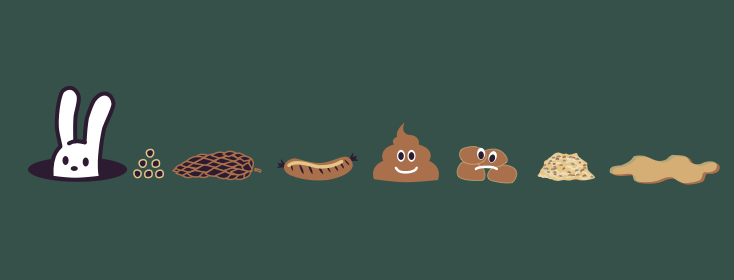What Is the Bristol Stool Scale?
I think the majority of us can agree that talking about our poop can be a little embarrassing! Being a nurse, stool discussions happen often, but certainly not about my own! However, it is important to educate yourself on your gut-health and what all the different stools symbolize.
The Bristol Stool Scale is a chart that explains your stool health. It has been a resource to gastroenterology experts for several years. It includes the size, shape, color, and consistency just to name a few. It also helps you better explain your stools to your physicians.
I have taken a look at the research and learned a lot about this topic. I'm here to share what I have learned. However, I am not a medical professional. If you are concerned about the shape or color of your stool, talk to your healthcare provider.
Bristol Stool Scale types
Type 1: Hard, lumpy, "rabbit pellet”-type, and difficult to pass stools.
Medical professions say this is typically someone who is VERY constipated. It is suggested to drink at least 40 ounces of water a day and increase fiber-rich foods. Many medications can also be the culprit of constipation.
Type 2: Sausage-shaped, lumpy, and similar to number one.
This type also correlates with constipation. Constipation can be a difficult symptom of IBS to manage. But with the right tools from a registered dietitian or healthcare provider, many find relief.
Type 3: Fairly normal stool.
It is sausage-shaped, but more well-formed than type 2 on the chart. There should be minimal straining during a bowel movement with type 3. But, if you do experience straining, be on the look out for hemorrhoids.
Type 4: Soft and smoother than type 3, and is also considered a normal stool.
This stool typically does not break apart. Multiple factors create smooth stools, such as drinking plenty of water and eating foods that are high in fat.
Type 5: Soft and smooth stool, but does not involve straining and tends to break apart.
Professionals say it’s neither normal nor abnormal, and should not last more than a few days. However, if it does, it's a good idea to get it checked out by your healthcare provider.
Type 6: Loose stool, this type is not normal.
It is not considered diarrhea, but more like mush. Multiple factors could cause this to happen, such as antibiotics, lactose intolerance, as well as other medications and conditions.
Type 7: Diarrhea; basically liquid.
I believe a lot of us can relate to this type! Similar to type 6, this can also be the culprit of many factors, not to mention it’s miserable!
I know how humiliating it can be to discuss your bowels with your physicians, but it is very important for our well-being. If you think something is off, have it checked out!
How about you? Have you noticed the size, shape, and color of your stool changes depending on your diet, medications, or water intake? Let us know in the comments below. We love to hear your feedback on topics like these. Thanks for sharing!

Join the conversation